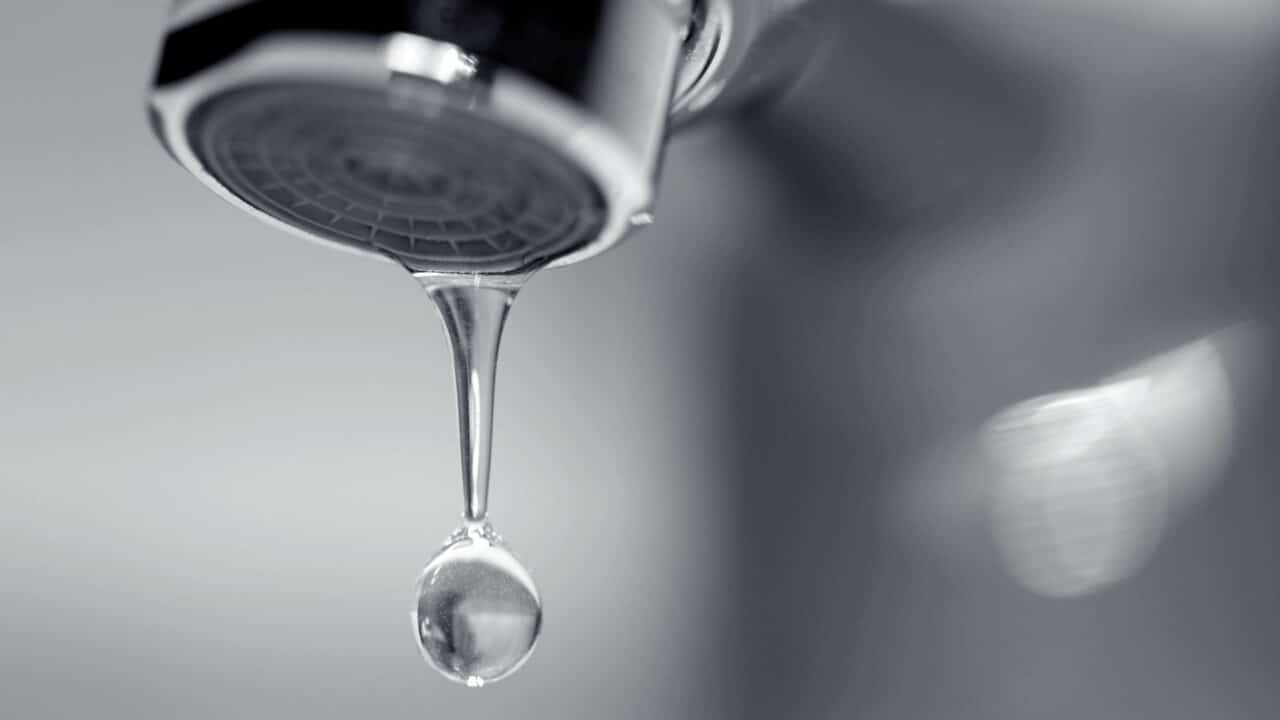If your faucet is leaking after installation, don’t panic — it’s usually due to a loose connection, a misaligned gasket, or overtightening. This guide walks you through the most common causes of post-install faucet leaks, how to spot them, and how to fix them without making things worse.
💧 Why Faucets Leak After Installation
You just installed a new faucet. It looks great. You turn on the water… and now there’s a mystery drip under the sink or water pooling around the base.
Post-installation leaks are extremely common — especially with DIY installs — and most stem from one of these three problems:
-
Loose or misaligned supply line connections
-
Overtightened fittings that crack washers or strip threads
-
Missing or incorrectly installed gaskets or O-rings
The good news? These are all fixable without tearing everything apart — as long as you spot them early.
🕵️♂️ Step 1: Identify Where the Leak Is Coming From
Start by turning the faucet on and looking for:
1. Leaks under the sink
-
Check supply line connections to the faucet and shut-off valves
-
Look for drips at the compression nuts, or water running down the hose
-
Use a paper towel to dab — it will quickly reveal damp spots
2. Leaks at the base of the faucet
-
If water pools where the faucet meets the countertop, the base gasket may be misaligned or missing
-
Water can also seep under the base and run down behind the cabinet unseen
3. Leaks from the faucet spout itself
-
If the faucet drips even when off, it’s likely a cartridge issue, not an installation problem
-
For brand-new faucets, this may be a factory defect or debris caught in the cartridge
🧰 Step 2: Common Causes and How to Fix Them
🔧 Supply Line Leaks
What causes it:
-
Loose compression nut
-
Over-tightening that cracks ferrules or deforms washers
-
Cross-threaded fittings
-
Mismatched thread types (e.g. NPT vs compression)
How to fix it:
-
Turn off the water at the shut-off valves
-
Disconnect and inspect the fittings
-
Apply Teflon tape only to male-threaded metal connections (not compression fittings)
-
Reconnect and hand-tighten, then give ¼ to ½ turn with a wrench
-
Don’t overtighten — it can crush the washer and cause more leaks
🪠 Base Leaks Around the Faucet
What causes it:
-
Gasket not centered
-
Faucet not fully seated on the sink
-
Caulk or putty missing (or overused)
-
Uneven countertop surface
How to fix it:
-
Shut off water and disconnect supply lines
-
Loosen mounting nuts and re-center gasket or apply a thin bead of silicone under the base
-
Re-tighten nuts carefully — too much torque can warp the faucet or baseplate
-
Wipe away excess sealant and let cure if using silicone
💥 Overtightening: The Most Common Mistake
It’s easy to think “tight = better,” but too much force ruins fittings.
Symptoms of overtightening include:
-
Leaks that get worse the more you crank down
-
Cracked plastic supply lines
-
Warped rubber washers
-
Stripped brass or metal threads
Fix it by:
-
Replacing damaged gaskets or supply lines
-
Using a torque-limiting wrench if you’re unsure
-
Tightening just enough to feel resistance, then going another ¼ turn
💦 Leaks at the Faucet Spout or Handles
What causes it:
-
Loose cartridge
-
Debris from pipes trapped in the valve body
-
Faulty cartridge from the factory
How to fix it:
-
Shut off water and remove the handle
-
Unscrew the retaining nut and pull out the cartridge
-
Flush the faucet body with water
-
Re-seat or replace the cartridge (check manufacturer for part number)
-
Reassemble and test
🔁 Step 3: Test the Fix
Once you’ve addressed the suspected leak point:
-
Reconnect everything
-
Turn on water slowly at the shut-off valves
-
Watch for drips while faucet is off and on
-
Run hot and cold water separately
-
Check again after 30 minutes and a few hours later
Pro tip: Lay a dry paper towel under all fittings overnight — if it’s damp in the morning, you still have a slow leak.
💬 Frequently Asked Questions
Why is my new faucet leaking under the sink?
A leak under a newly installed faucet usually points to a loose or improperly sealed connection. Here are the most common causes to check:
-
Loose supply line connections: Even a quarter-turn too loose can let water seep out. Make sure the compression fittings are snug — hand-tightened, then turned another ¼ to ½ turn with a wrench.
-
Missing or damaged washers: Many supply lines rely on built-in rubber washers to form a seal. If these are missing, cracked, or misaligned, leaks are likely.
-
Cross-threaded fittings: If the threads weren’t lined up cleanly during installation, tightening won’t help — you’ll need to remove and reinstall the fitting properly.
-
Over-tightened connections: Ironically, tightening too much can crush gaskets or crack fittings, causing leaks instead of stopping them.
-
Improper faucet seal at the sink deck: If the base of the faucet wasn’t sealed properly (with plumber’s putty or silicone, depending on the surface), water from above could be dripping down inside the cabinet.
Start by drying everything off, then turning the water on slowly and watching where the leak starts. If you’re not sure, placing a paper towel under each connection can help you spot where the drip hits first.
Can a faucet leak from being too tight?
Yes, over-tightening a faucet connection can actually cause leaks — not prevent them. When fittings are cranked down too hard, you risk crushing rubber washers, cracking plastic threads, or warping metal parts. These issues can lead to slow leaks that may not show up right away, especially under the sink or inside wall-mounted setups.
Common signs of over-tightening include:
-
Drips even after everything feels “tight”
-
Hairline cracks in valve or faucet bodies
-
Damaged compression fittings or flattened gaskets
Faucet connections should be snug, not forced. A good rule of thumb: hand-tighten first, then use a wrench for an extra ¼ to ½ turn. If you feel strong resistance or components start to deform, back off. It’s better to test for leaks and tighten slightly if needed than to overtighten and cause damage.
Do I need Teflon tape on faucet supply lines?
In most cases, no — Teflon tape isn’t needed for faucet supply lines. That’s because most modern supply lines use compression fittings or rubber washers, which are designed to seal without any thread sealant. Adding Teflon tape can actually interfere with the seal, especially if it prevents the compression ring or gasket from seating properly.
Here’s when not to use it:
-
Braided stainless steel or flexible supply lines: These come with pre-installed gaskets or rubber washers. No tape needed.
-
Compression fittings on shutoff valves: These seal by pressure, not by threading.
The only time Teflon tape is appropriate is if you’re connecting to a threaded iron pipe or older threaded fitting without a gasket — rare in modern faucet installs. If you’re unsure, check your supply line packaging or faucet manual. When in doubt, clean threads and install dry unless directed otherwise.
Should I use plumber’s putty or silicone to seal a faucet?
It depends on the materials involved and the faucet design. For most standard faucets, either plumber’s putty or silicone caulk can create a watertight seal — but choosing the right one matters:
-
Use silicone when installing on stone, quartz, composite, or plastic sinks, as plumber’s putty can stain or break down those surfaces over time. It also adheres better to uneven or textured surfaces.
-
Use plumber’s putty for metal-to-metal installs like stainless steel sinks and metal faucet bases, where flexibility and easy cleanup are a plus.
That said, always check the manufacturer’s instructions — some faucets have rubber or foam gaskets and don’t require any sealant. Others may specifically recommend one over the other to maintain the warranty. If in doubt, silicone is more universal, but harder to remove cleanly if future repairs are needed.
How tight should faucet supply lines be?
Start by hand-tightening the supply line snugly onto the faucet or shutoff valve. Once it’s secure by hand, use a wrench to give it an additional ¼ to ½ turn — no more. You’re aiming for a firm, leak-free connection without crushing the rubber gasket or stripping the threads. If you feel sharp resistance or the fitting begins to rotate the valve or faucet, stop immediately. Over-tightening is a common mistake that can lead to cracked fittings, crushed washers, or hidden leaks that show up later. After installation, always check for leaks by slowly turning on the water and watching for drips or moisture around the connection.

